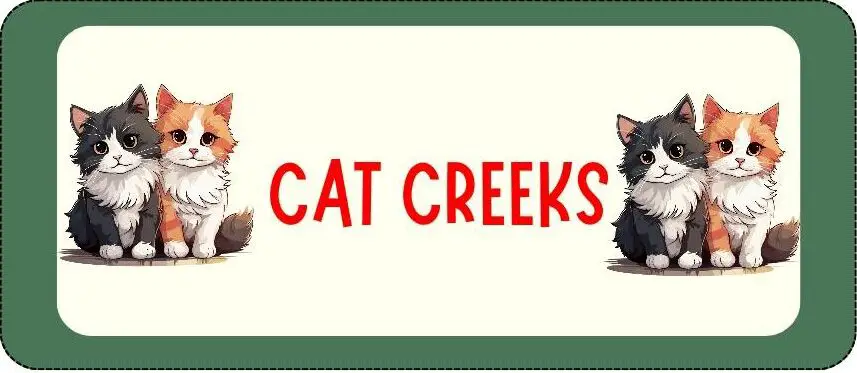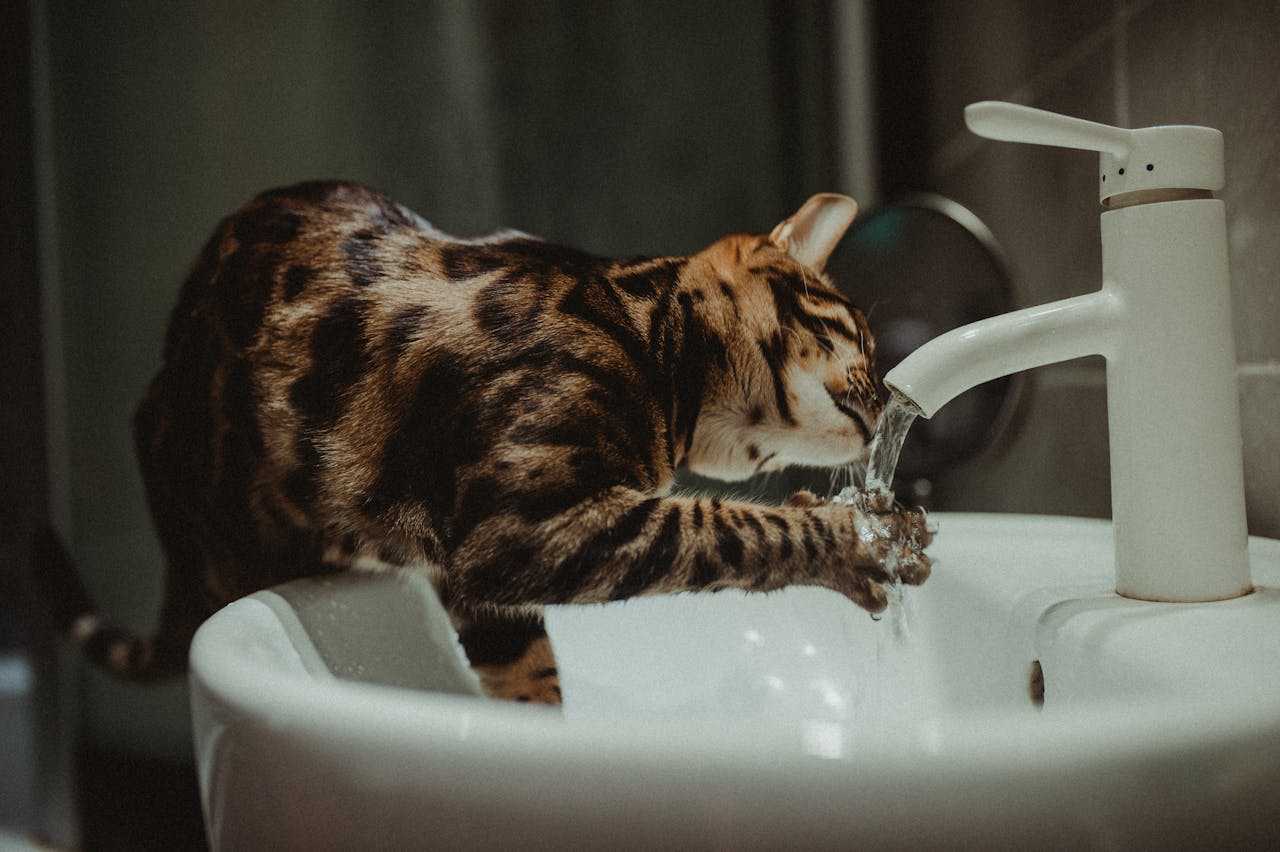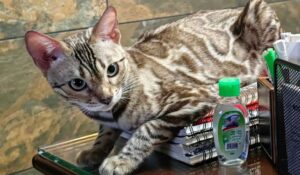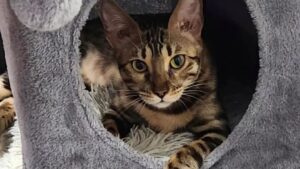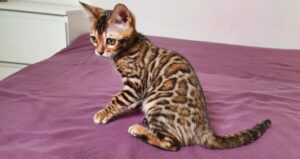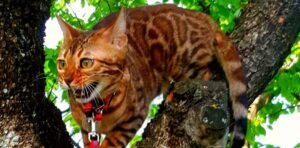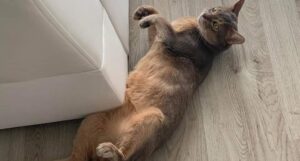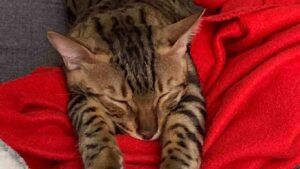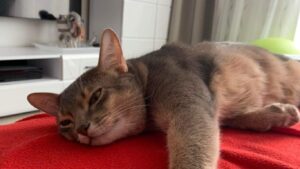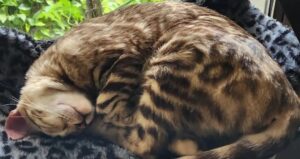Welcome to my latest blog post, where I will delve into the intriguing world of Bengal cats and their seemingly insatiable thirst for water.
If you’ve noticed your Bengal cat guzzling down H2O like there’s no tomorrow, you’re not alone.
In this article, I’ll explore the reasons behind this behavior and provide valuable insights for cat owners seeking answers.
So, let’s get started…
Why Does My Bengal Cat Drink so Much Water
Your Bengal cat is drinking so much water because of their high activity levels and unique metabolism, which can increase their water needs.
Additionally, their diet, especially if they consume dry kibble, may contribute to increased thirst.
However, excessive water consumption could also signal underlying health issues like diabetes or kidney problems, warranting a vet visit.
Let’s break it down…
Reasons Your Bengal Cat Is Drinking So Much Water
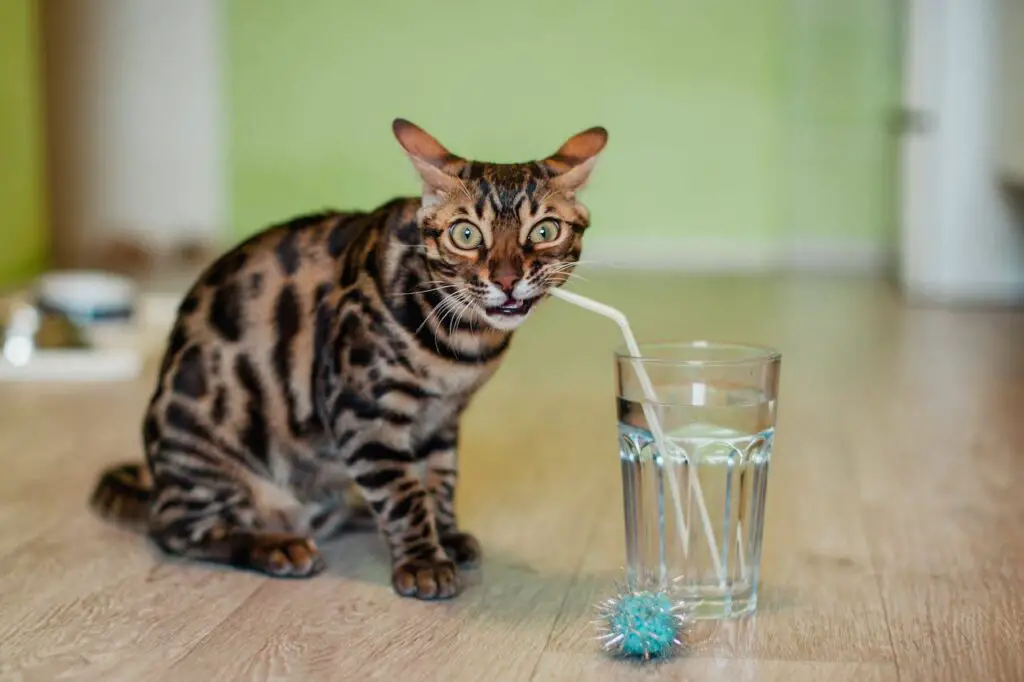
In my opinion as a cat owner, here are some common reasons your Bengal cat is drinking so much water:
1. High activity levels and unique metabolism
Based on what I gathered from my friends who own a Bengal cat, it’s not uncommon for Bengal cats to have high energy levels and a unique metabolism.
These adorable feline friends are known for their playful nature and boundless energy.
With all that activity, it’s only natural for them to need more water to stay hydrated.
How to identify this issue: If your Bengal cat is constantly on the move, engaging in playtime, and seems to have an insatiable thirst, then their high activity levels and unique metabolism might be the cause.
How to effectively address this issue: I believe the best way to address this is to ensure that your Bengal cat always has access to fresh and clean water.
You should ensure their water bowl is filled regularly and consider having multiple water sources available throughout your home.
Additionally, you should also provide wet cat food, which has a higher water content and can help keep your Bengal cat hydrated.
2. Bengal cats that eat only dry cat food
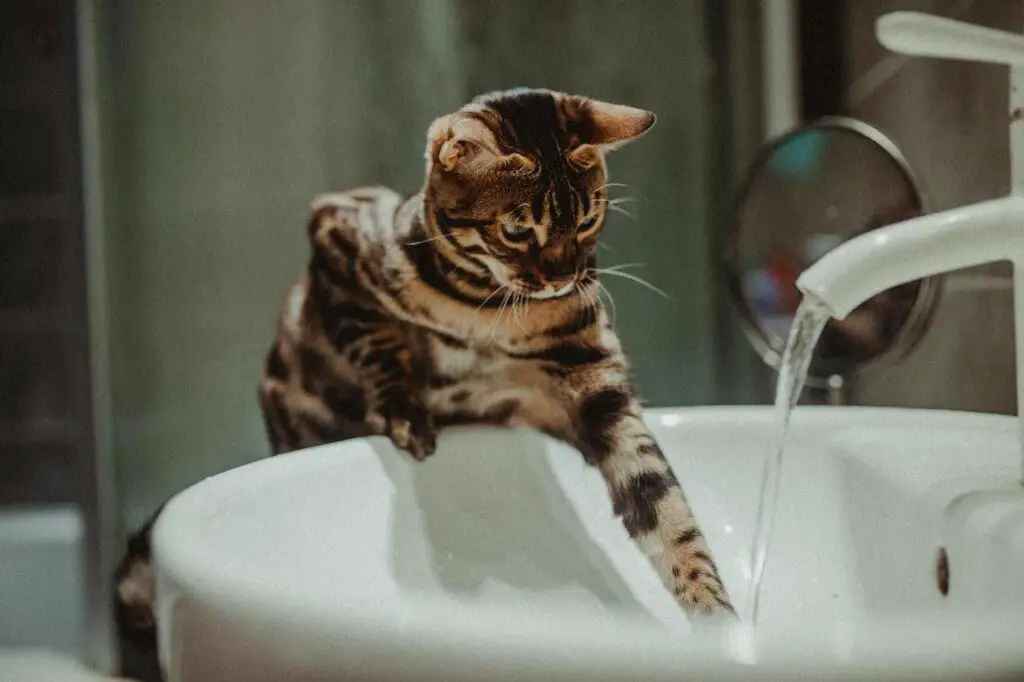
Many Bengal cats have a preference for dry cat food. While this may be convenient, dry cat food contains less moisture compared to wet cat food.
As a result, Bengal cats that eat only dry cat food may feel the need to drink more water to compensate for the lack of moisture in their diet.
How to identify this issue: I believe if your Bengal cat primarily eats dry cat food and is drinking an excessive amount of water, this reason could be the culprit.
How to effectively address this issue: To fix this issue, I suggest you consider introducing wet cat food into your Bengal cat’s diet.
Wet cat food has a higher water content, which can help keep your cat hydrated.
You can slowly mix wet cat food with dry food to transition your Bengal cat to a more balanced diet.
Remember to consult with your veterinarian before making any dietary changes.
3. Hot weather and Increased activity
Just like we humans, cats need more water during hot weather and increased physical activity.
If your Bengal cat is spending more time outdoors or in warmer environments, they may be drinking more water to cool down and stay hydrated.
How to identify this issue: If you notice that your Bengal cat is drinking more water during hotter days or after engaging in intense physical activity, then hot weather and increased activity might be the cause.
How to effectively address this issue: To address this issue, I strongly recommend you ensure that your Bengal cat always has access to fresh and cool water.
I advise you should place additional water bowls around the house, especially in cooler areas.
If your cat spends time outdoors, you should provide a shaded area with water nearby.
It’s also a good idea to keep your Bengal cat indoors during the hottest parts of the day to prevent overheating.
4. Side effects of medication
It’s important to understand that certain medications can cause increased thirst in cats, including Bengal cats.
If your cat is on medication, it’s important to check if excessive thirst is listed as a side effect.
How to identify this issue: If your Bengal cat has recently started taking medication and is suddenly drinking more water, it’s worth considering if the medication could be the cause.
How to effectively address this issue: Consult with your veterinarian about the medication your Bengal cat is taking.
They can determine if excessive thirst is a known side effect and recommend any necessary adjustments or alternative treatments.
I advise you should follow your veterinarian’s guidance and not make any changes to your cat’s medication without their approval.
5. Diabetes mellitus
One possible reason for your Bengal cat drinking excessive amounts of water is diabetes mellitus.
This condition occurs when your Bengal cat’s body is unable to regulate blood sugar levels properly, leading to increased thirst and urination.
How to identify this issue: If your Bengal cat is drinking more water than usual and also experiencing weight loss, increased appetite, or lethargy, it’s crucial to consider diabetes mellitus as a possible cause.
Additionally, frequent urination or accidents outside the litter box may also be indicators.
How to effectively address this issue: If you suspect diabetes mellitus, I strongly advise you should consult with your veterinarian.
They can perform blood tests to diagnose the condition and develop a suitable treatment plan.
Treatment typically involves insulin administration, dietary changes, and regular monitoring of blood sugar levels.
6. Kidney problems
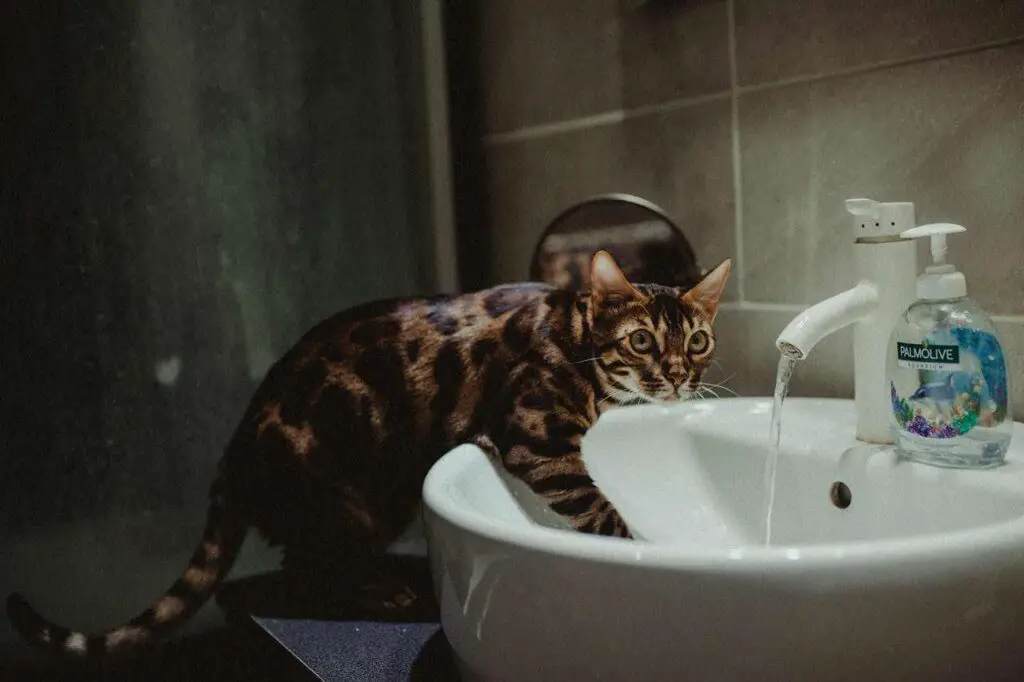
Another common reason for increased water consumption in Bengal cats is kidney problems.
Kidney disease or failure can cause excessive thirst, as the kidneys are responsible for filtering waste and regulating fluid balance in the body.
How to identify this issue: If your Bengal cat is drinking more water than usual and also exhibiting signs such as decreased appetite, weight loss, vomiting, or changes in urination patterns (e.g., increased or decreased frequency), kidney problems may be the underlying cause.
How to effectively address this issue: To address this issue, I advise you should consult with a veterinarian for a proper diagnosis and treatment plan.
Treatment options for kidney problems may include dietary modifications, medication, and fluid therapy to support kidney function.
Regular monitoring of kidney function and hydration status is also crucial.
Related: Health problems in Bengal cats.
7. Dietary Changes
From what I gathered from my friends who own Bengal cats, changes in your Bengal cat’s diet can also lead to increased water consumption.
If you recently switched their food or introduced new treats or supplements, these dietary changes could be affecting their thirst levels.
How to identify this issue: If your Bengal cat’s water intake has increased after a recent change in their diet or the addition of new food items, it’s likely that dietary changes are the cause.
How to effectively address this issue: I recommend you monitor your cat’s water intake and observe if it stabilizes over time.
If the increased water consumption continues, it may be necessary to consult with a veterinarian to assess the suitability of the new diet.
They can help determine if any adjustments are needed or if a different type of food might be more appropriate for your Bengal cat’s needs.
8. Dehydration
Ironically, one potential reason for increased water consumption in Bengal cats is dehydration.
If your Bengal cat is not adequately hydrated, their body will naturally crave more water to compensate for the lack of fluids.
How to identify this issue: Signs of dehydration in cats include dry gums, sunken eyes, lethargy, loss of appetite, and decreased urination.
If your Bengal cat exhibits these symptoms along with increased water intake, it’s possible that dehydration is the cause.
How to effectively address this issue: To fix this issue, you should ensure that your Bengal cat always has access to fresh and clean water.
You should also encourage them to drink by providing multiple water sources throughout your home, especially in areas where they spend the most time.
If you suspect dehydration, it’s important to consult with a veterinarian who can assess your cat’s hydration status and provide appropriate treatment, which may include subcutaneous fluids or other hydration methods.
Related: when to take your cat to the vet.
How to address excessive drinking of water in Bengal cats
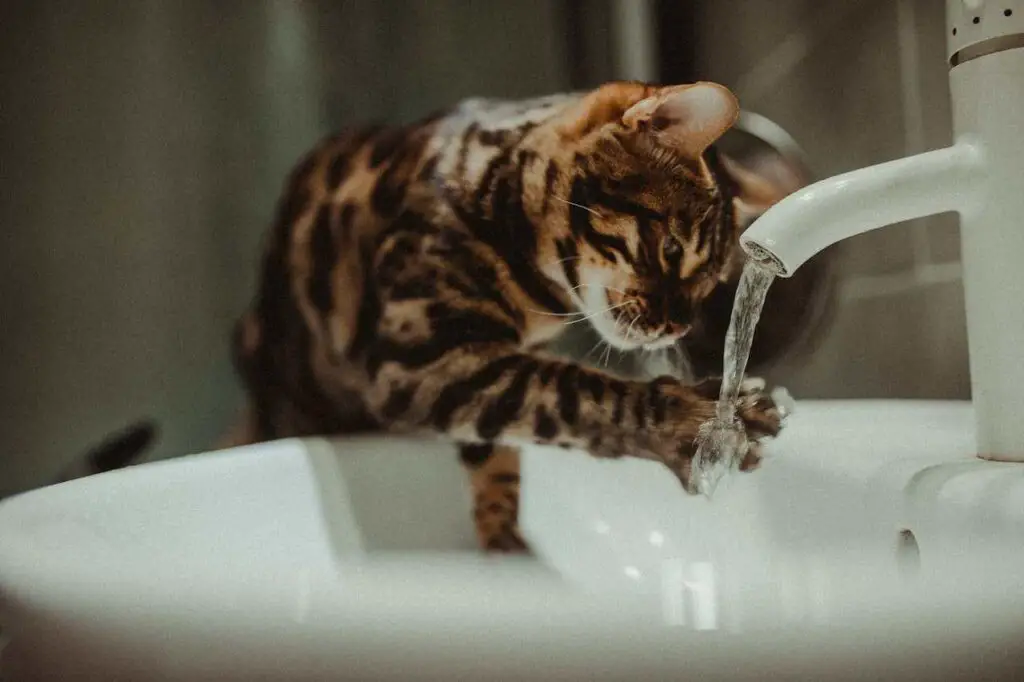
Excessive drinking of water in Bengal cats can be a concerning behavior, but there are ways to address it.
Firstly, it’s important to rule out any underlying medical conditions by taking your cat to the vet for a thorough examination.
If no medical issues are found, it may be helpful to evaluate their diet.
Switching to a high-quality, balanced diet that meets their nutritional needs can help regulate their water intake.
Additionally, providing fresh water in multiple locations throughout the house and monitoring their water consumption can help you keep track of any changes.
Lastly, creating a stimulating environment with plenty of toys and activities can help distract your Bengal cat from excessive water drinking.
Related: Identifying a sick cat.
Final Thoughts
In summary, if you find that your Bengal cat is drinking excessive amounts of water, it’s important to monitor their behavior closely.
While increased water intake can be a sign of dehydration or an underlying health issue, it’s also possible that your feline friend simply has a higher thirst drive.
Consulting with a veterinarian is always recommended to ensure your cat’s well-being.
Related: Keeping your cat healthy.
Related Questions
Why does my Bengal cat drink so much water?
Bengal cats may drink more water than other breeds due to their active nature and high metabolism. Additionally, Bengal cats have a genetic predisposition to kidney disease, which can cause increased thirst. It is important to ensure that your Bengal cat has access to fresh water at all times.
How much water should a Bengal cat drink?
The amount of water a Bengal cat should drink can vary depending on factors such as age, activity level, and diet. However, as a general guideline, a Bengal cat should drink approximately 60–80 milliliters of water per kilogram of body weight per day. If you notice a significant increase or decrease in your Bengal cat’s water intake, it is advisable to consult a veterinarian.
What are the possible reasons for excessive water drinking in Bengal cats?
Excessive water drinking in Bengal cats can be caused by various factors, including dehydration, kidney disease, diabetes, hyperthyroidism, or certain medications. If you notice that your Bengal cat is drinking an unusually large amount of water, it is recommended to consult a veterinarian for a proper diagnosis and appropriate treatment.
How can I ensure my Bengal cat stays hydrated?
To ensure that your Bengal cat stays hydrated, you can take the following steps:
- Provide fresh water: Make sure your Bengal cat has access to clean and fresh water at all times.
- Monitor water intake: Keep an eye on your cat’s water intake and consult a veterinarian if you notice any significant changes.
- Wet food: Consider incorporating wet food into your Bengal cat’s diet, as it contains higher moisture content compared to dry food.
- Water sources: Provide multiple water sources throughout your home to encourage your Bengal cat to drink.
- Regular check-ups: Schedule regular veterinary check-ups to monitor your Bengal cat’s overall health and address any potential issues promptly.
